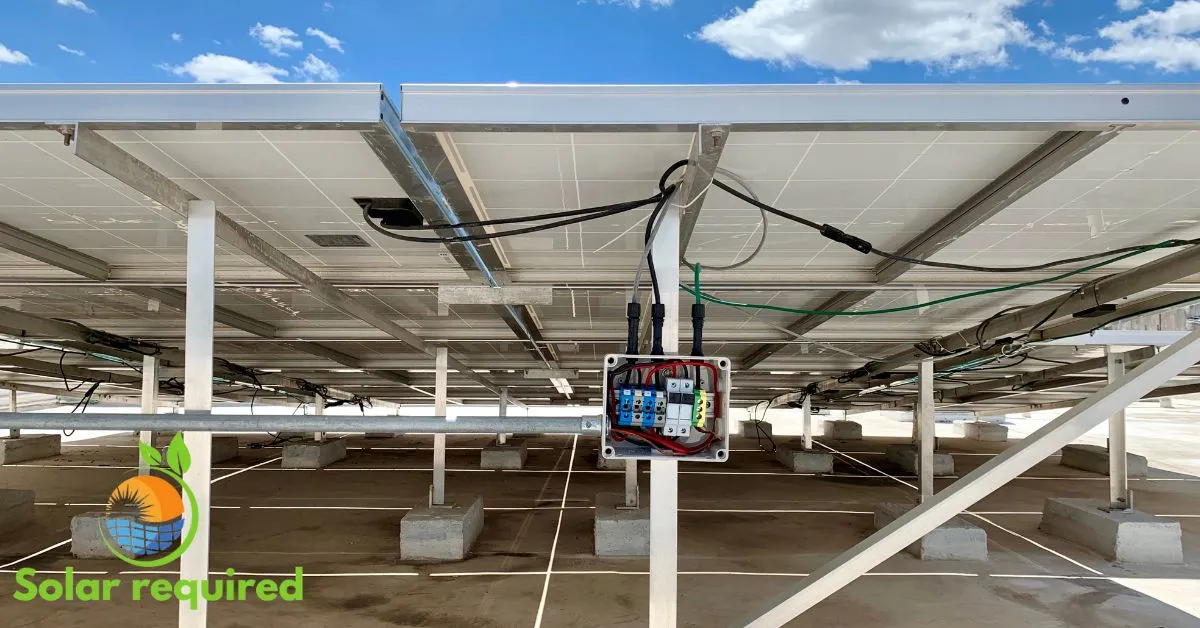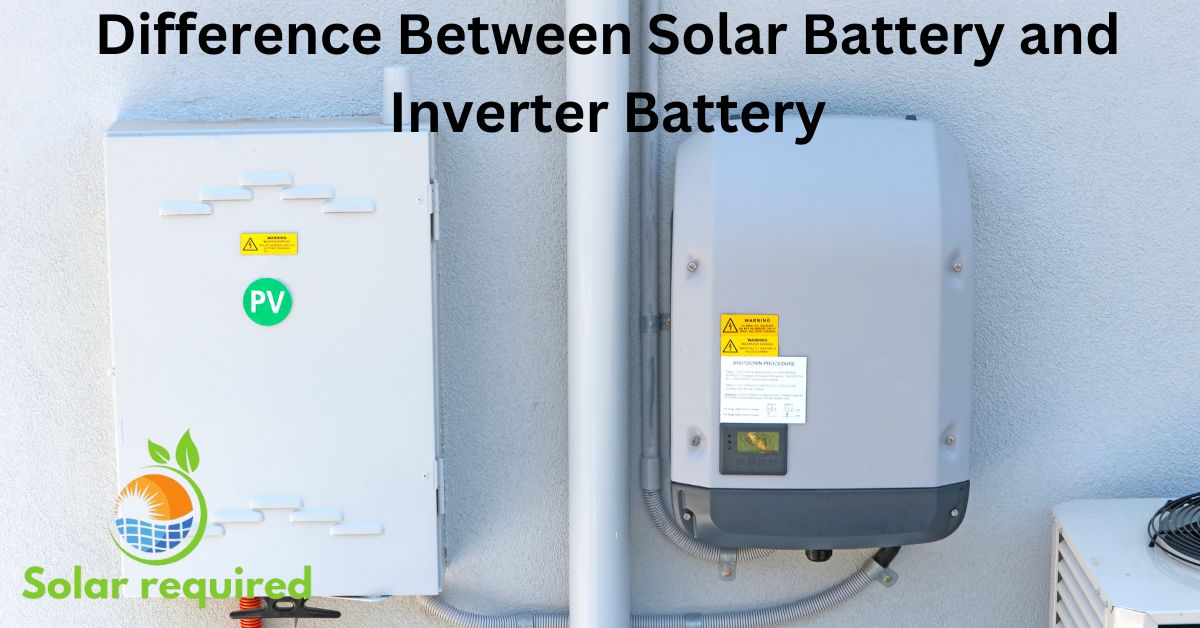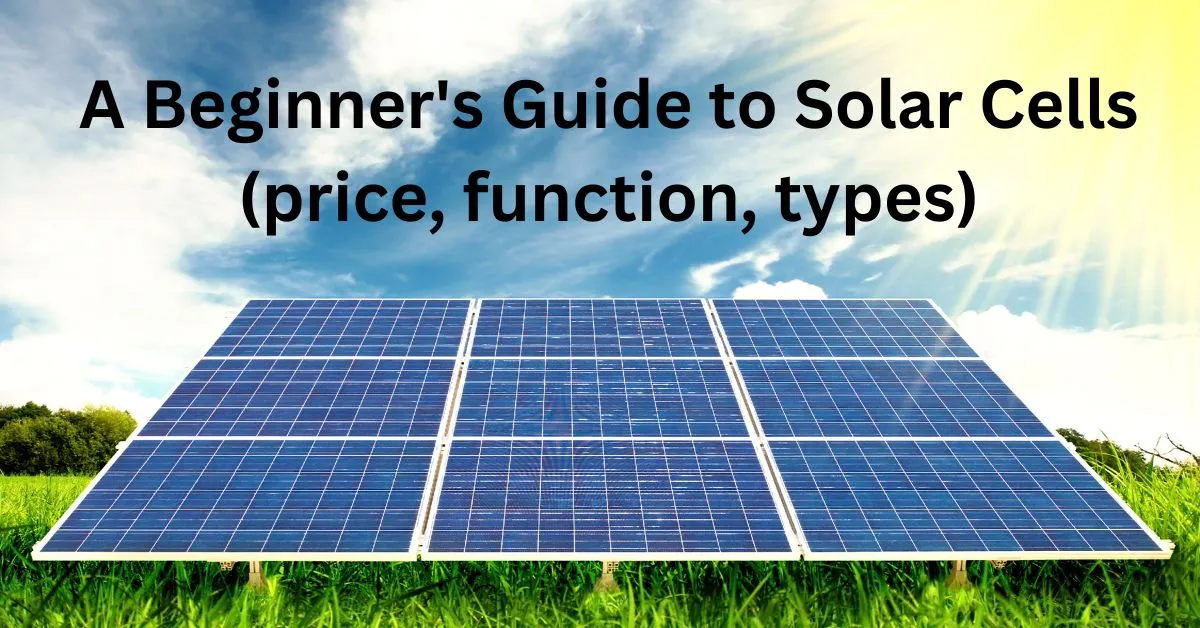## What is a Solar Panel Junction Box?
A solar panel junction box is a crucial component of a solar panel system. It connects electrical components in the solar panel. It ensures that the generated electricity is distributed. The junction package is on the back of the solar panel. It houses the critical wiring and helps connect to other panels or the main power system.
Importance of a Solar Panel Junction Box
One cannot overstate the importance of a solar panel junction package. It plays a vital role in ensuring the functionality and safety of the entire solar panel system. One main job is to shield electrical connections.
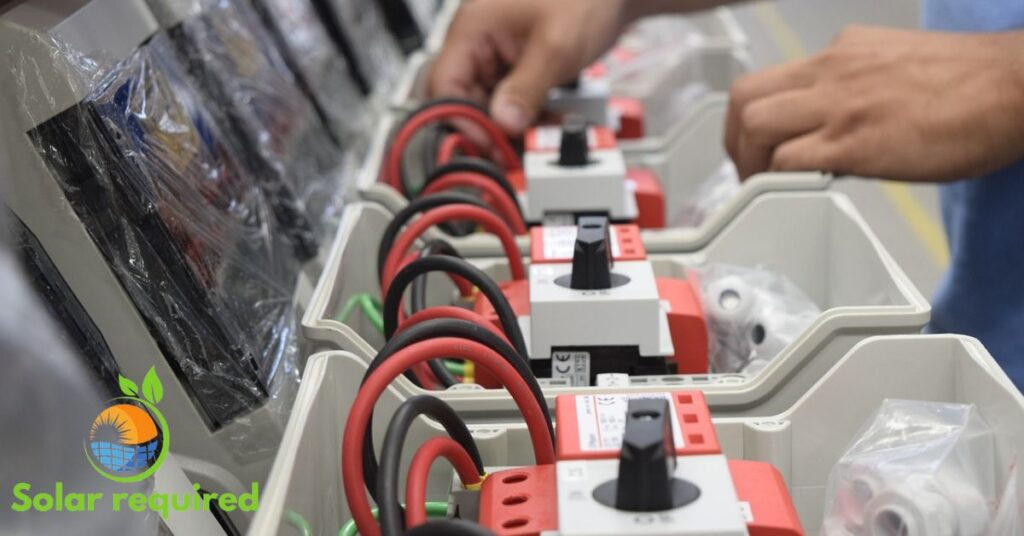
It guards them from things like moisture, dust, and heat. The junction package provides a secure enclosure. It shields the delicate wiring and parts from potential damage. This extends the lifespan of the solar panel system.
Moreover, the junction package enhances the performance of the solar panel system. It is a central hub. It allows the connection of many solar panels in series or parallel. This lets the panels make more power together.
It’s crucial for maximizing the system’s energy output. Additionally, the junction box helps connect to the main power system or battery bank. It ensures the smooth flow of electricity.
Components of a Solar Panel Junction Box
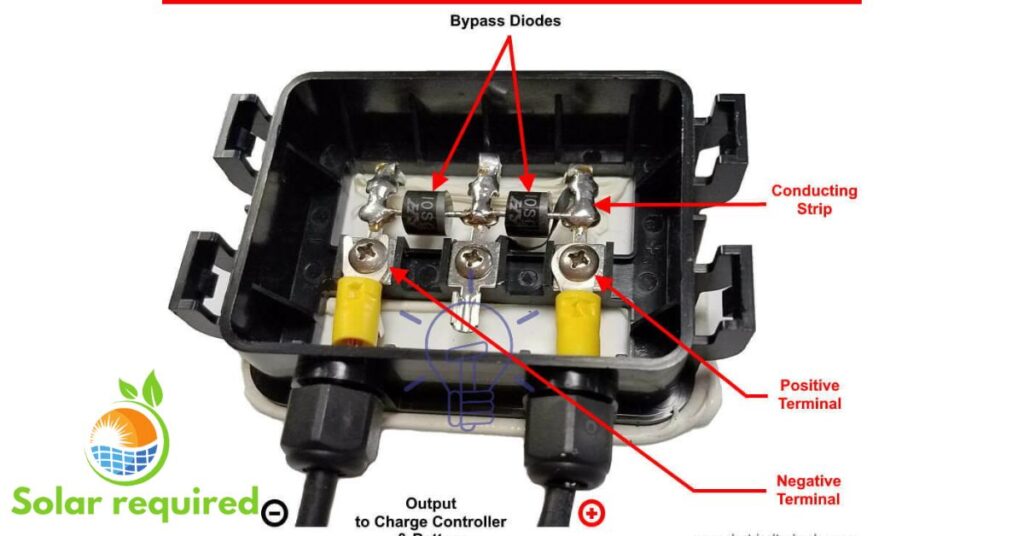
Knowing the parts of a solar panel connection box is key. It helps you understand how it works. The connection box has key parts. They work together to keep the solar panel system intact.
- 1. Diodes:
- 2. Terminal Blocks:
- 3. Bypass Diodes:
- 4. Busbars:
- 5. Enclosure
Diodes
Diodes are electronic components that allow the flow of current in one direction while blocking it in the opposite direction. They are essential. They prevent the flow of electricity in the wrong direction. This flow can cause power loss and damage to the solar panels.
Terminal Blocks:
Terminal blocks are connection points in the connection box. Here, the solar panel’s internal wiring and external components connect securely. They provide a safe and convenient way to make and break electrical connections.
Bypass Diodes:
Solar panels use bypass diodes. Specialized diodes are used when a part of the panel is shaded or not working well. They optimize energy output. They do this by allowing the current to bypass the shaded area. This prevents power loss and keeps the system’s performance.
Busbars:
Busbars are conductive bars that provide a pathway for the flow of electricity within the junction box. They divide the current among the diodes and other parts. They ensure that each part of the solar panel system gets the power it needs.
Enclosure:
The enclosure is the outer casing of the junction box. It protects the internal parts from the environment. Aluminum or plastic are durable and weather-resistant materials. They make sure the system lasts a long time.
How Does a Solar Panel Junction Box Work?
Understanding a solar panel connection box’s internal mechanisms is vital. It helps you appreciate its role in a solar panel system. The connection box is a central hub. It joins the parts and makes electricity move freely. The solar panel has photovoltaic cells. They make direct current (DC) power when sunlight touches them.
The internal wiring of the connection box then receives this DC. In the connection box, the busbars split the current. They divide it between the diodes and other parts. The diodes stop power loss. They also stop the reverse flow by ensuring the current goes in the right direction.
If a part of the solar panel is shaded or not functioning the bypass diodes will come into play. They allow the current to bypass the shaded area. This ensures that the system’s performance is not hurt. This feature helps especially when shading is unavoidable. For example, on a shaded rooftop.
The junction box also provides a secure connection point for the solar panel system. It lets you connect many panels in series or parallel. This maximizes their energy output and makes it easy to link them to the main power system or battery bank.
Solar Panel Junction Box Connection Setting
The whole functionality and security of the solar panel system depend on making connections in a connection box. To guarantee the system performs well you must follow the suggested policies and specs.

First, it’s critical to confirm that you have oriented and aligned the solar panel appropriately. Accordingly, the connection box has to be facing the best direction for the most exposure to sunlight.
Usually, this means orienting the solar panel toward the equator or the direction that gets the most sunshine all day. You then have to attach the internal wiring of the solar panel to the terminal blocks of the junction box.
Once you have placed the internal connections, you can connect the junction box to other panels or the main power system. For multiple panel installations connect the plus and minus terminals. Do this in series or parallel depending on the desired system setup and voltage needs.
It is important to note that the connection setting may vary depending on the specific solar panel system and requirements. So, we recommend checking the manufacturer’s guidelines. Or, seek professional help to make a safe and effective connection. You must know about Grounding and Bonding.
Types of Solar Panel Junction Boxes
Solar panel boxes come in various types. Each type is designed for specific applications and requirements. Understanding the types can help you pick the best intersection box for a solar panel system.
- 1. Standard Junction Boxes
- 2. Insulated Junction Boxes
- 3. intersection boxes with high temperatures
- 4. Junction Boxes with Multiple Strings
- 5. Integrated intersection Boxes
1. Standard Junction Boxes:
These are the most common types of junction boxes found in solar panel systems. The solar panel system is designed to meet basic requirements providing essential protection and connection features.
2. Insulated Junction Boxes:
As the name implies, weatherproof junction boxes are resistant to inclement weather. Usually composed of sturdy, weather-resistant materials, they offer improved defense against moisture, dust, and very high or low temperatures.
3. Junction with high temperatures:
Solar panels that work in hot conditions are particularly made for use with high-temperature boxes. These boxes are made to resist high temperatures without sacrificing their durability or functionality by engineers.
4. Intersection boxes with Multiple Strings:
In solar panel installations, multi-string boxes are designed to connect many strings of panels. They have distinct terminals for every string, making it simple and effective to link several panels together.
5. Integrated Junction Boxes:
The solar panel itself integrates intersection boxes eliminating the need for an external junction box. These boxes provide a simple and compact solution. They reduce the wiring complexity and improve the system’s looks.
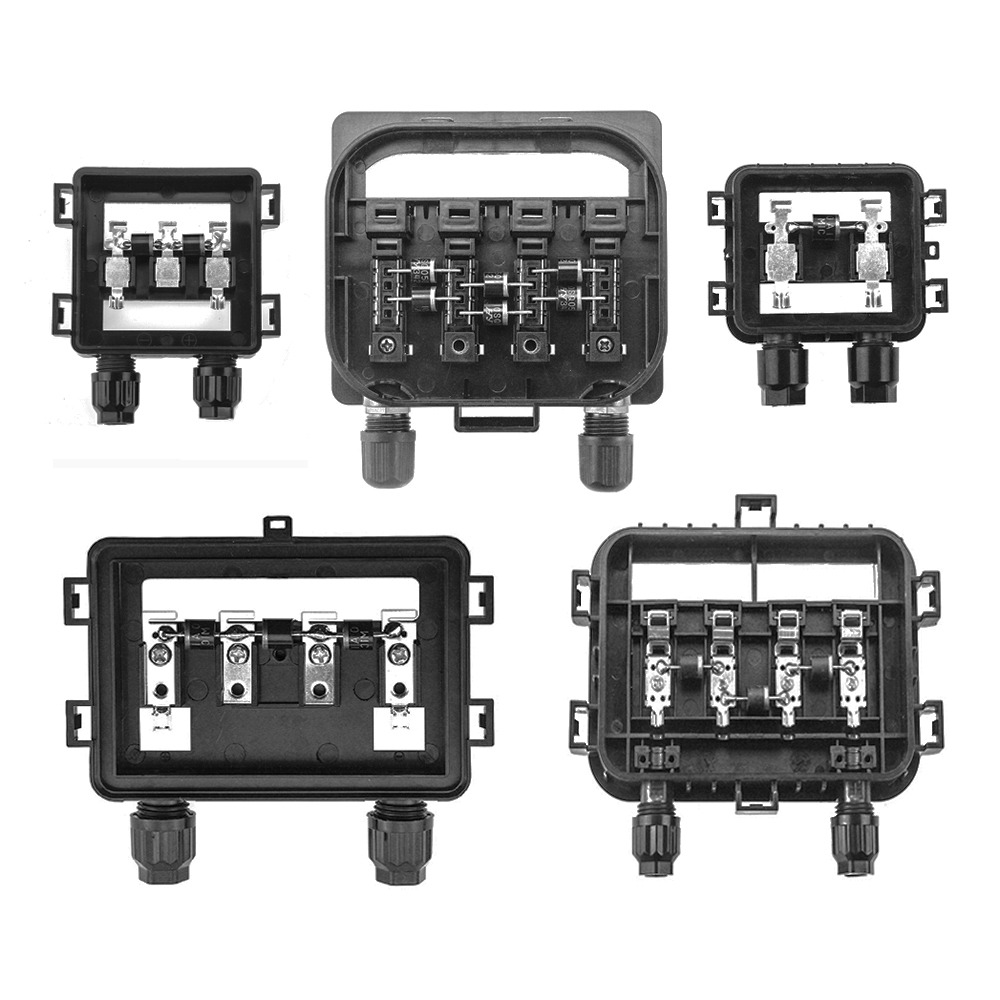
Solar Panel Junction Box Wiring
To ensure the solar panel system operates effectively you must wire the intersection box correctly. Following the suggested wiring rules is crucial. They ensure a dependable and durable connection.
The first step is to connect the solar panel wire to the intersection box’s terminal blocks. Make sure you complete the connection. Do this by aligning and insulating the positive and negative terminals.
Connect the intersection box’s bypass and diodes according to the manufacturer’s specifications. These diodes are essential for guaranteeing that electricity flows and preventing reverse flow.
After setting up the internal connections you can connect the intersection box to other panels or the main power system.
When setting up the system determine the desired configuration and voltage requirements. Make the connection following the recommended wiring. Use series or parallel.
Ensuring that all wiring connections within the intersection box are insulated and protected is important. This helps prevent any potential short circuits or electrical hazards, ensuring the safety of the solar panel system.
How to Open a Solar Panel Junction Box
Opening a solar panel junction box may be necessary for maintenance or troubleshooting purposes. However, it is important to be cautious. Follow the proper process to avoid damage or hazards.
Before attempting to open the intersection box it is crucial to disconnect the solar panel from the main power system or battery bank. This helps eliminate any potential electrical shock hazards.
You can access the intersection box when you detach the panel. The majority of boxes come with a cover or lid that is removable by unscrewing the bolts or screws. It’s crucial to use the right instruments and adhere to any particular guidelines the manufacturer may have supplied.
It’s crucial to look at the wires and parts inside when you open the intersection box. When doing maintenance or troubleshooting take care to follow all safety rules.
The manufacturer’s instructions or expert help should be consulted if any repairs or replacements are necessary. This contributes to maintaining the solar panel system’s functioning and integrity.
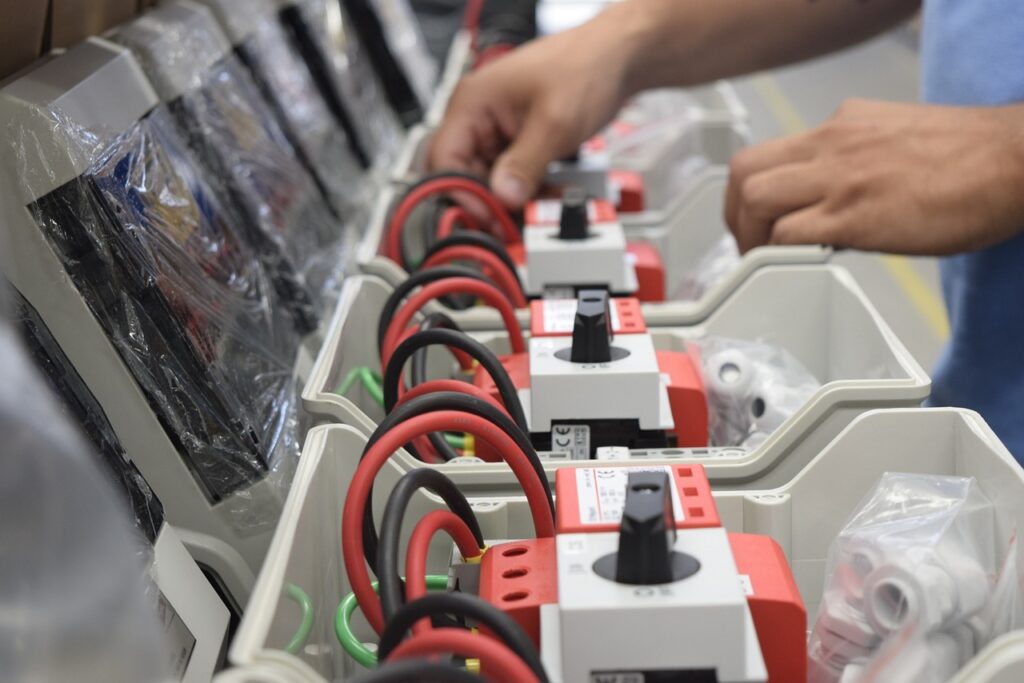
Upgrading Your Solar Panel Junction Box
Upgrading your solar panel junction box can be a good investment. This is especially true if you want to boost the performance or expand your solar panel system. Here are a few considerations to keep in mind when considering an upgrade:
Enhanced Power Production:
Increasing the power output of your solar panel system may be achieved by upgrading to a more sophisticated junction box. Seek for intersection boxes with improved connecting possibilities and higher efficiency to enable the production of more energy.
2. Added Safety Elements:
More recent boxes frequently include better safety features including increased insulation and integrated surge protection. With the help of these characteristics, you may feel secure knowing that your solar panel system is shielded from power surges and any electrical risks.
Before you upgrade your solar panel junction box first assess your needs. Then consult with professionals or experts in the field. They can provide valuable insights and recommendations based on your unique needs and goals.
Conclusion
To sum up, a box for solar panels is a crucial part of a solar panel system. It offers connection, protection, and optimization capabilities that are essential to the system’s efficient and secure functioning. To get the most out of your solar panel system and extend its lifespan, you must understand the significance, parts, and operation of a box.
Purchasing a premium box is a smart move regardless of whether you want to install new solar panels or upgrade your current system. It guarantees that your solar panel system runs smoothly, produces the most energy possible, and is shielded from the elements.
If you have any questions please contact us.
